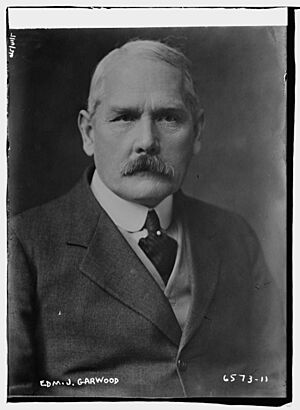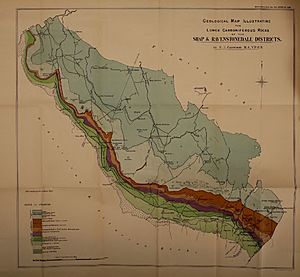Edmund Johnston Garwood facts for kids
Edmund Johnston Garwood (born May 18, 1864, in Bridlington, East Riding of Yorkshire; died June 12, 1949, in London) was a famous British geologist. He even became the President of the Geological Society of London from 1930 to 1932.
Contents
Early Life and Education
Edmund Garwood was born in a town called Bridlington. He went to a well-known school called Eton. Later, he studied at Trinity College, Cambridge, starting in 1886. This is where he began his journey into geology.
A Career in Geology
In 1901, Garwood became a professor at London University. He taught geology and mineralogy, which is the study of rocks and minerals. He held this important job for many years, until he retired in 1931.
Exploring Mountains and Glaciers
Garwood loved to explore. In 1899, he joined an expedition with D.W. Freshfield to Kanchenjunga, a huge mountain. He wrote about the geology of that area. He also studied glaciers, which are giant rivers of ice, in places like Spitsbergen. He looked at how glaciers shaped valleys in the Alps and the Himalayas.
Garwood also researched different types of rocks, like limestone, and how they formed. He even studied ancient life found in rocks, which helps us understand Earth's history. He was very good at mapping out the geology of different regions, like Northumberland and Durham in England.
Leading Geological Societies
Edmund Garwood was a respected leader in the world of geology. From 1913 to 1914, he was the President of the Geographical Association. This group focuses on geography and exploring the world. Later, he became the President of the Geological Society of London, which is a very old and important group for geologists.
Royal Society Recognition
In May 1914, Garwood was chosen to be a Fellow of the Royal Society. This is a huge honor for scientists in Britain. It means he was recognized as one of the best scientists of his time. The Royal Society is a famous group that supports scientific excellence.
Images for kids



